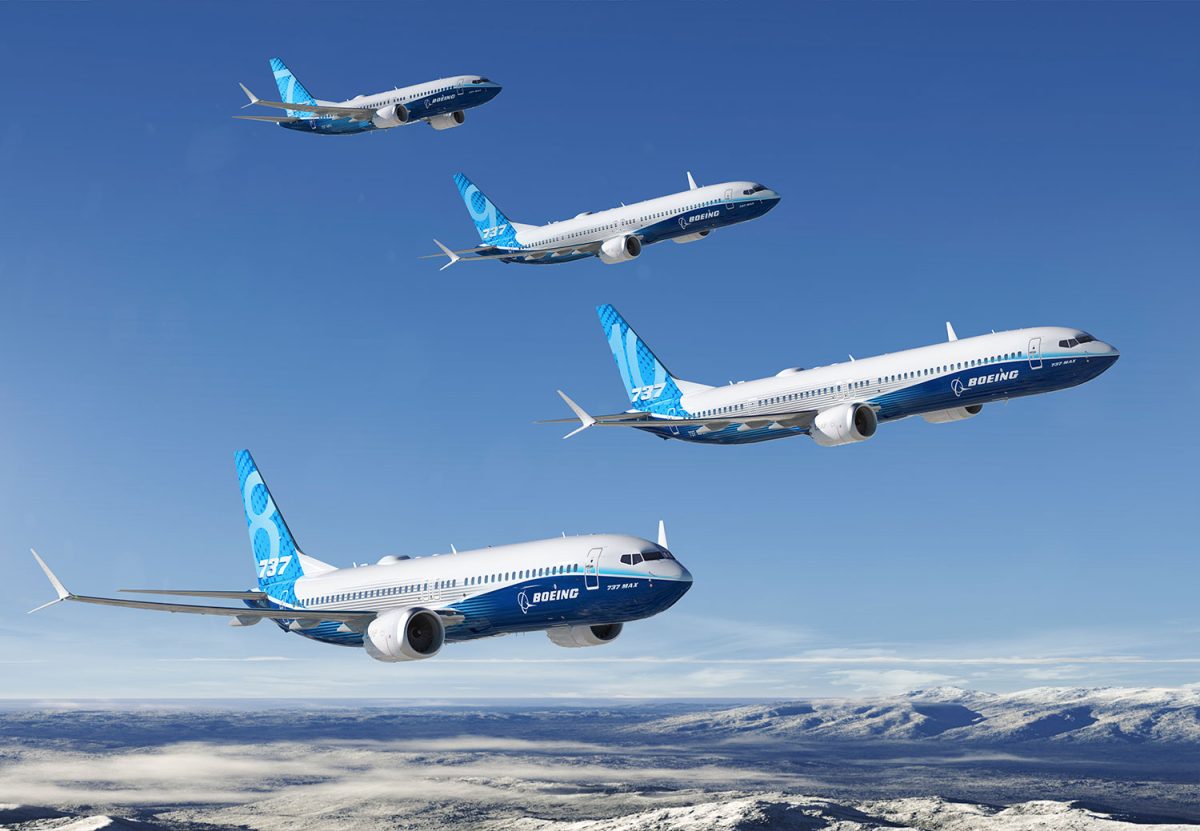Summer break is fast approaching and with almost three months of time off comes the opportunity to leave one’s ordinary life behind and go far away to some unique place. How would one travel to such foreign and distant destinations? An airplane. Airplanes (which this article is about if you haven’t figured out), are these aluminum tubes with a wing jutting out of either side, containing crowded rows of seats and complementary pretzels, all of it manufactured with some of the most exact engineering this world produces. Engineering that you wouldn’t want to fail when reaching speeds up to 575 miles per hour at an altitude of 42,000 feet. Generally, planes are pretty safe and still are, (the last fatal commercial aircraft disaster in the United States occurred in 2009 per NBC Insider)—however, recent developments in one of the largest Aircraft manufacturers in the world: Boeing, have brought a litany of errors in quality control as well as highlighting major quality control and corporate corner-cutting taking place in the company.
The first sign of trouble began on October 29, 2018, when a 737 MAX 8, sold to Lion Air and taking off from Soekarno-Hatta International Airport in Indonesia, crashed 13 minutes after departure. Then on March 10, 2019, a 737 MAX 8 operated by Ethiopian Airlines slammed into the ground after taking off from Bole International Airport in Ethiopia. Are you beginning to see the trend here? The combined fatality for both crashes was 346 people, with no survivors. Both crashes were with the same aircraft model the 737 MAX 8, a newly produced line of 737, a decades-old model, fitted with larger fuel-efficient engines, to compete with Airbus’s A320 neo. To compensate for the larger engines they installed a software system called MCAS to pull the nose down automatically; however, to save costs, Boeing did not inform airlines or aircrews of the software’s presence so that they wouldn’t have to recertify pilots who flew the previous 737 model.
After the outbreak of these two incidents, the Federal Aviation Administration (FAA) grounded the entire line-up of next-generation Boeing 737s; Boeing lost 18.3 billion dollars (per Forbes) in the 2019 fiscal year and Boeing CEO Dennis Muilenburg was fired.
With such a large screw-up as the MCAS system was, surely Boeing would step up its quality control, buckle down on safety, and manufacture airplanes with the minutest attention to its assembly. Boeing does not manufacture toasters, after all, they make multimillion-dollar flying machines.
On November 18, 2020, the 737 MAXs were ungrounded and gradually ramped up production. Then in 2019 and 2021 whistleblowers who worked as quality engineers at Boeing’s South Carolina’s plant came out to talk about safety concerns with the most recent Boeing plane: the 787 Dreamliner. “I haven’t seen a plane out of Charleston yet that I’d put my name on saying it’s safe and airworthy,” said John Barnett a quality engineer who worked at the company for three decades. Lots of the whistle blowers (acording to the New York Times) described seeing sharp metal pieces next to wiring in the cockpit, there is managerial pressure not to report issues with assembly, and when whistle blowers made concerns to supervisors they were moved to another part of the plant. Unfortunately, Mr. Barnett was found dead by “a self-inflicted gunshot wound” after testifying in court for two days in March 9, 2024. Officially, he had committed suicide but one can’t deny the very precarious situation he was with the Boeing company at the time of his death.
And then, on January 5th, 2024, a door plug flew off an Alaska airline’s Boeing 737 MAX 9, midair over portland Oregon. The massive hole in the plane caused the cabin to rapidly depressurize and cut the flight short, making an emergency landing back to Portland. The National Transportation Safety Board, upon inspection, discovered that four of the bolts to hold the door were never installed during assembly. This reignited concern over not just the safety of the 737 MAX lineup but also of other Boeing models. Safety when manufacturing airplanes should be key so why hasn’t Boeing changed their process?
The story dates back to 1997 when Boeing acquired the McDonnel Douglas corporation. The new Boeing after this merger was filled with Mcdonnel Douglas executives and employees that pushed a more efficient and cost-reductive strategy to newer boeing models. Optimising the production process became what Boeing focused on, with the 737 MAXs, 787, and 777. Delivering work to contractors and smaller companies to make components later fitted together by Boeing. For the Alaska Airlines flight that the door blew off of, the fuselage was manufactured by Spirit Areosystems were the door plug attained damaged rivets and in the process of repair and retataching the door the bolts were not put into place. In conjunction with that many experienced workers were retired or let go after covid and to downsize many departments Boeing viewed as unnecessary.
Boeing is not just a company it is an American institution, it is our largest exporter of aerospace products and besides Airbus is the only other option for commercial aircraft, and to see it fumble this badly in recent years is frankly embarrassing. So far by the end of 2024 Beoing CEO Dave Calhoun and Chairman Larry Kellner will step down from their positions. The F.A.A has inspected Boeing sites and found that out of 89 of the products, 33 had failed inspection. As of February 28, Boeing has been giving a 90 day deadline to implement better safety procedures and a more tight sealed quality control practices. Criminal investigations have been performed regarding recent incedents and FAA stated in a press release that they “will continue its increased onsite presence at Boeing’s facility in Renton, Washington, and Spirit AeroSystems’ facility in Wichita, Kansas.”
Airplanes are one of the safest modes of transportation because of strict regulations, checks on quality, measures in reducing any and all risks. If you are flying on a Boeing aircraft in the near future the likely hood of any failure is probably close to zero; however, business practices that prioritize profits over passenger safety is some thing that should be halted before extreme consequences occur.



